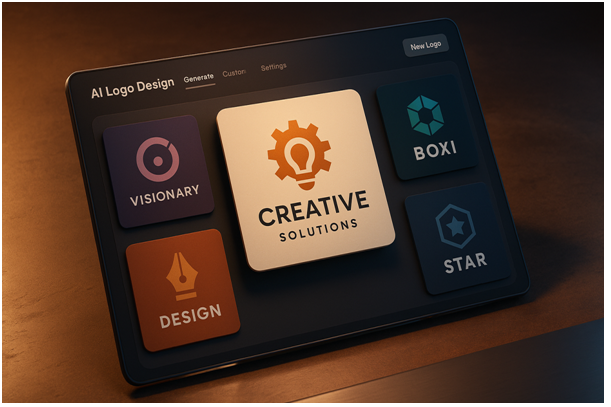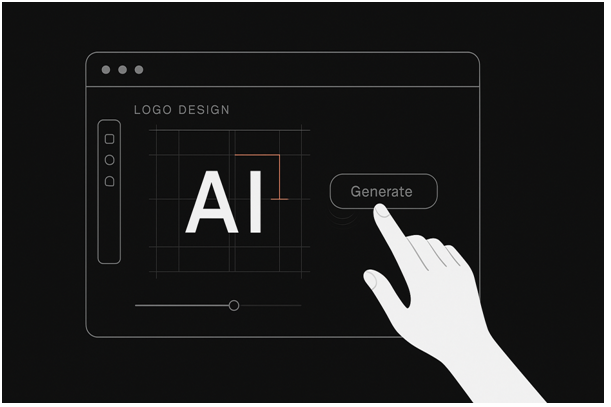
Launching a startup is thrilling — but it’s also a high-stakes balancing act. Between building your product, pitching to investors, and figuring out your go-to-market strategy, branding often gets squeezed into the margins. And yet, your logo is the first handshake your brand makes with the world. It sets the tone, evokes emotion, and ideally sticks in your customer’s mind.
Enter AI-generated logos. With the rise of generative tools, entrepreneurs now have access to affordable, fast, and fairly stylish branding options. But is it the right move for your startup?
In this article, you’ll discover:
- The core benefits of AI logo design for early-stage startups
- The risks and limitations you need to weigh carefully
- Actionable tips on when and how to use AI branding tools
- Real-world logo strategies from brands you already know
Let’s dive in…
1. Speed: From Idea to Logo in Minutes
Startups live and die by velocity. With an AI logo generator, you can create a visual identity in under 10 minutes — no need to wait on designers or agencies.
Take early-stage founders juggling multiple priorities. Instead of three weeks of back-and-forth with a freelancer, they can upload a brand name, choose a style, and instantly preview dozens of options.
Actionable tip: Use this speed advantage to quickly test branding ideas before going all-in. Generate 3–5 versions, then test reactions with your audience or co-founders.
Remember that agility doesn’t have to mean sloppiness. Use fast design to prototype, but be intentional when choosing what goes public.
2. Affordability: Budget Branding That Delivers

Design agencies can charge thousands for a custom logo. Freelancers may cost less, but prices still climb quickly with revisions. AI tools offer an entry point — sometimes under $50 — that doesn’t compromise entirely on aesthetics.
That’s a game-changer for founders bootstrapping or validating MVPs.
Pro Tip: Use free AI logo tools for early-stage validation. Once you prove traction, consider evolving your branding with a pro designer.
Platforms like Turbologo are especially handy here — offering editable, scalable logo files and branding kits that save you time and money.
3. Flexibility: Tweak It Until It Works
With AI tools, you’re not stuck with a single version. You can modify layouts, fonts, colors, and symbols — all in real time. That’s huge when you’re still shaping your product’s voice and positioning.
Say you’re launching a productivity app. You start with a minimalist typeface, but user feedback suggests adding a vibrant icon. AI platforms make that easy to adjust — no email threads, no extra costs.
Actionable tip: Explore variations for different touchpoints — social media, app icons, presentations — to maintain brand cohesion from day one.
Sounds simple? It is.
4. Originality: Where It Starts to Get Tricky
Let’s be honest. AI logos are generated from pre-trained models using existing shapes, symbols, and styles. That means originality isn’t guaranteed.
If you’re building a tech platform, and your AI-generated logo is a blue geometric letterform… join the crowd. You risk blending into a sea of sameness.
Actionable tip: Use AI designs as a baseline — but customize them. Change fonts, adjust spacing, swap icons. The goal is to move from “template” to “distinct.”
Bold move: Bring in a designer to refine your AI draft. It saves time and gives you a sharper brand presence.
5. Ownership and Licensing Concerns
Here’s the fine print many skip: some AI platforms offer limited rights to the logos they generate. Depending on the tool, your design might be used by others or lack full trademark eligibility.
This can be a legal landmine once your brand grows or attracts attention.
Actionable tip: Before launching publicly, double-check the licensing terms. Opt for tools that guarantee full commercial rights and unique outputs.
Pro Tip: If you plan to trademark your logo, work with legal counsel early. They’ll help ensure your design — AI-made or not — meets registration standards.
6. Emotional Connection: Can AI Nail It?
Your brand isn’t just visuals — it’s emotion. It’s the story people remember. That’s where some AI logos fall flat. They might look “fine,” but lack the personality or depth that custom designs often capture.
Airbnb’s logo, for example, blends a heart, a location marker, and the letter “A.” It tells a story. So does the Spotify symbol, a visual nod to wireless sound waves.
Examples of Creative Logo Approaches: Spotify, Dropbox, Airbnb
Actionable tip: Pair your AI logo with messaging and visuals that add depth. Storytelling fills in what design might miss.
Don’t be afraid to iterate later. A good-enough logo is a start — but great brands evolve.
7. When AI Works Best — and When It Doesn’t
Best for:
- MVP launches
- Test campaigns
- Internal product brands
- Budget-constrained founders
Less ideal for:
- Luxury or high-touch brands
- Companies competing on design or emotion
- Startups preparing for large-scale launch or media attention
Actionable tip: Align your logo quality with your audience expectations. If you’re selling $5 apps — AI might be perfect. If you’re building a fintech trust platform, invest in more polish.
Pro Tip: Keep your visual identity consistent across all channels — even if you start with AI, unify colors, typography, and layout rules.
8. How to Maximize AI Design Without Looking Generic
Here’s the trick: treat AI as your creative assistant, not the creative director. Use it to explore ideas, gather inspiration, and test styles — but add your human judgment on top.
Many founders use AI to create a logo with AI, then pass it to a designer for refinement. That combo offers speed, control, and customization — a win-win.
Actionable tip: Create a brand moodboard before using AI. Add logos you admire, colors you resonate with, and values your brand stands for. It helps the AI tool steer toward better results.
Don’t forget: your brand deserves thought, not just automation.
Conclusion
AI logo design offers a fast, affordable, and flexible way to kickstart your branding journey. It’s especially helpful for startups moving quickly or launching on a tight budget. But there are trade-offs — around uniqueness, licensing, and emotional impact — that shouldn’t be ignored.
The best approach? Use AI as a tool in your broader brand-building toolkit. Be thoughtful. Be intentional. And never stop evolving your visual identity as your startup grows.
Your logo is more than a graphic — it’s your brand’s opening line. Make it count.

